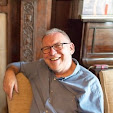 |
| (c) Tony Gillam 2015 |
The little town of Clun in South Shropshire is one of my
favourite places to visit. Only seven
miles from the Welsh border, it is a tranquil outpost of the border country located
entirely in the Shropshire Hills Area of Outstanding Natural Beauty. The River
Clun divides what little there is of the town in two, and a stone, packhorse
bridge, built around 1450, connecting the Saxon part of Clun with the Norman
part, now carries the A488 and B4368 routes across the river. Looming over the town are the ruins of Clun
Castle, now managed by English Heritage.
 |
| (c) Tony Gillam 2015 |
As you approach the ruined keep, helpful interpretation
panels tell the story of how the motte and bailey castle was originally built
in about 1300 by Robert de Say, a follower of Earl Roger of Montgomery, and that it is one of the earliest Norman
border castles. But what the English Heritage
panels don't tell you is that, in
1946, a fictional group of adventurers, the Lone Pine Club, made it their third
headquarters. It was here, in Malcolm Saville's
The Secret of Grey Walls, that the
Shropshire Lone Piners - David Morton, the twins Dickie and Mary and their
friend Petronella (Peter) Sterling - induct
Jon and Penny Warrender as official members of the Lone Pine Club. Jon and Penny are from Rye in Sussex, and
this is their first visit to Shropshire. They arrive, by bicycle, just in time
to witness an 'angry, flaming sunset' over the apparently unremarkable town:
... Although it was nearly dark now the setting
sun, at that very moment, flung out a final, fiery
challenge to the dying day. Suddenly the western sky glowed red and orange and silhouetted against this strip of colour the
travellers saw, for the first time, the ruins of the Castle of Clun dominated by its mighty keep... (p. 47)
 |
| (c) Tony Gillam |
Later in the adventure, just before Jon and Penny are
inducted as members of the Club, Dickie declares Clun Castle should be Lone
Pine HQ3:
... They climbed the hill until they were
actually in the shadow of the mighty walls of the keep and then Dickie said: "This place is HQ Three. One is our
own Lone Pine at home. Two is the barn
at Seven Gates and right in this old castle is HQ Three ..." (pp.
57-58)
 |
| (c) Tony Gillam 2015 |
Why such a small club should need quite so many headquarters is a bit of a
mystery. Be that as it may, while Robert
de Say has doubtless earned his place in the history of Clun, I think the least
English Heritage could do is also commemorate the significance of the site for
a group of young people who first appeared in book form in the 1940s and whose
adventures continued to be enjoyed by children throughout the 1950s, 60s and
70s.
 |
| (c) Tony Gillam 2015 |
Malcolm Saville, author of 90 books for children, died in 1982.
The Malcolm Saville Society was formed in 1994 to celebrate 50 years of the
Lone Pine books. It now has over a thousand members of all ages who share an
enthusiasm for Savillle's work and a love of the English countryside he used as
a backdrop to his stories. Surely, the
adventures of the Lone Pine Club are as much a part of our English Heritage as
the ruined castles that once guarded the borderlands in the aftermath of the
Conquest? Is it asking too much for English Heritage to make a brief reference
to the fact that Clun Castle is none other than Lone Pine Headquarters Number
Three?

No comments:
Post a Comment